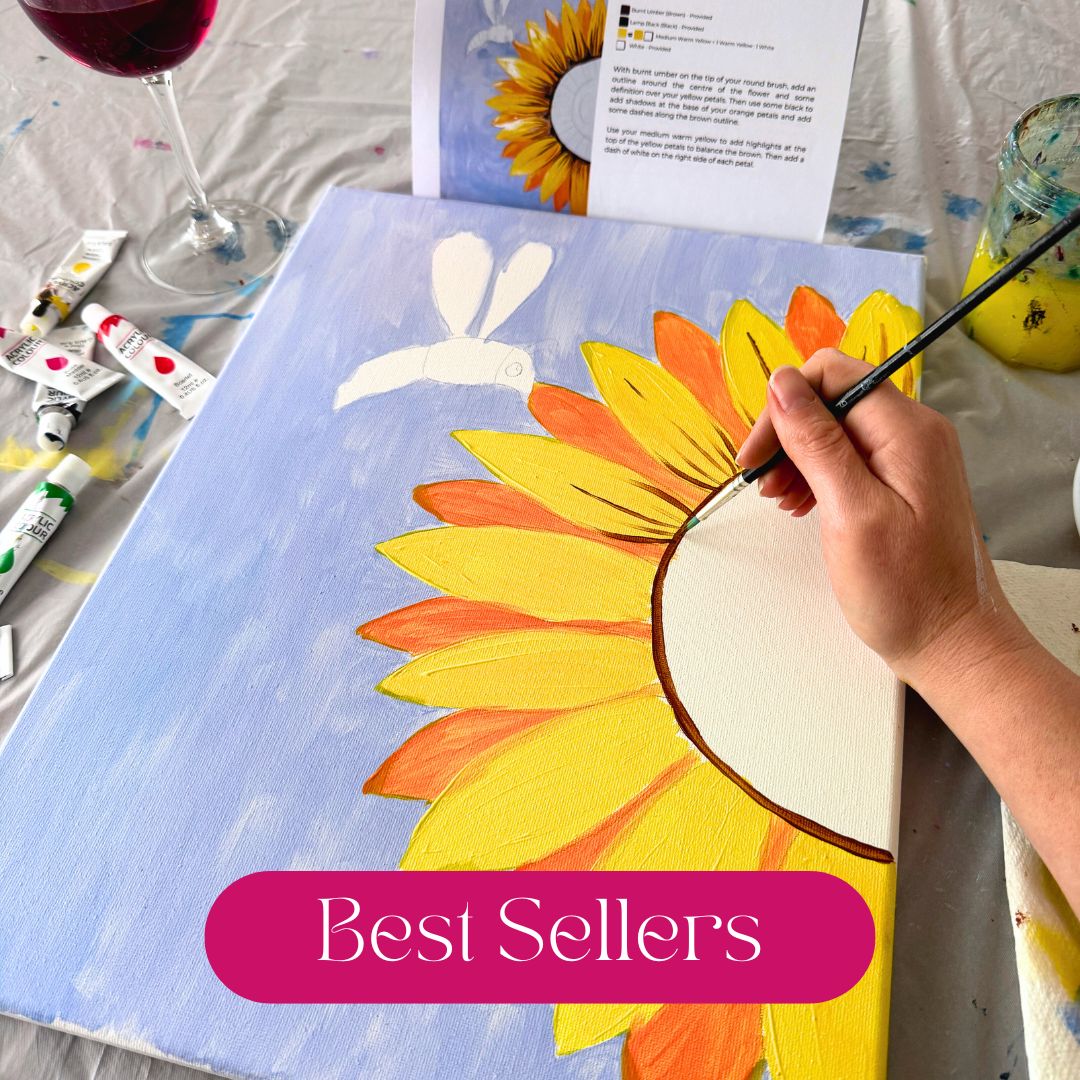Painting Mistakes? Here’s How to Fix Them Without Starting Over

We’ve all been there - you’re in the middle of a painting, feeling great, and then… oops. A stray brushstroke, a colour that’s not quite right, or a section that just doesn’t look the way you imagined. But don’t worry - painting is more forgiving than you think! Before you panic or scrap your work, try these easy fixes for common painting mistakes.
1. Oops! Wrong Colour Choice
Sometimes, a colour that looked perfect in your mind doesn’t quite work on the canvas. Instead of starting over:
✅ Blend it out - If the paint is still wet, use a damp brush or a clean cloth to blend the colour into the background.
✅ Layer over it - Once dry, mix a better shade and paint right over the mistake. Acrylics are great for layering!
✅ Glaze to adjust – A light wash of a complementary colour can shift tones without completely covering the original.
2. Stray Brushstrokes or Smudges
A little slip of the hand happens to everyone. If you’ve got a rogue brushstroke:
✅ Dab it away - If the paint is still wet, gently dab it with a damp paper towel or cotton bud.
✅ Cover it up - Once dry, simply paint over the mistake with your background colour.
✅ Turn it into something new - Sometimes, a mistake can become part of the artwork - turn a stray stroke into a leaf, a shadow, or an abstract detail!
3. Overblending or Muddy Colours
If your colours have mixed too much and turned muddy:
✅ Let it dry - Stop blending and let the area dry before applying fresh layers.
✅ Add contrast - Use a lighter or darker shade to redefine areas that lost their depth.
✅ Use a dry brush technique - Once dry, use a dry brush with a small amount of paint to gently build up the correct colours again.
4. Harsh or Unwanted Lines
Maybe your outline is too thick, or a section looks too sharp. Try this:
✅ Feather the edges - While the paint is still wet, use a clean damp brush to soften harsh edges.
✅ Glaze over it - A thin layer of a semi-transparent colour can soften areas without erasing details.
✅ Add texture - Dry brushing or stippling can help blend rough sections naturally.
5. Unintentional Gaps or Uneven Coverage
If parts of your canvas look patchy or unfinished:
✅ Double-check opacity - Some colours are naturally more transparent - add an extra layer if needed.
✅ Mix in a tiny bit of white - This can improve coverage without changing the colour too much.
✅ Use a sponge or stippling brush - Dabbing paint onto problem areas can even things out smoothly.
6. Accidentally Covered an Important Detail?
If you’ve lost a key part of your design under layers of paint:
✅ Use a stencil or tracing method - If working from a stencil, retrace the detail over dry paint.
✅ Repaint with precision - A fine brush and a steady hand can bring details back to life.
✅ Add highlights - Sometimes, redefining an area with lighter accents can help restore lost details.
Final Tip: Keep Going!
Many artists make small adjustments throughout their painting process - mistakes are just part of the creative journey! The more you paint, the better you’ll get at troubleshooting and turning little slip-ups into happy accidents.
Need a stress-free way to start painting? Check out our beginner-friendly painting kits - they come with everything you need to create a masterpiece at home. 🎨✨
Stay Creative!
Lena x

